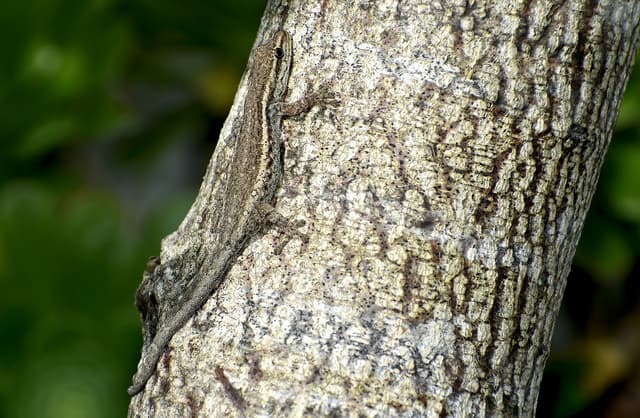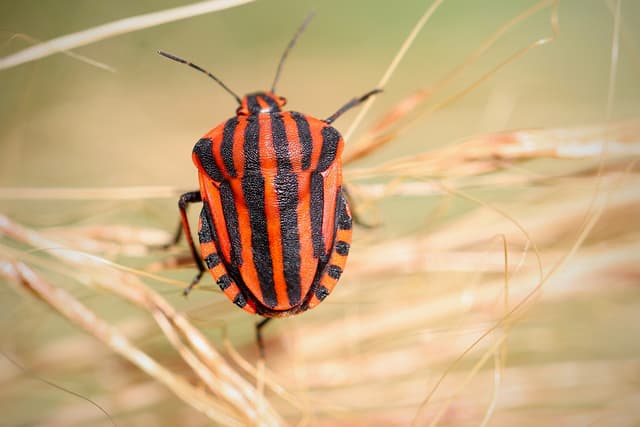Myths about teaching can hold you back
- Year 7
Adaptations of predators and prey
I can describe how predators and prey are adapted to help them survive.
- Year 7
Adaptations of predators and prey
I can describe how predators and prey are adapted to help them survive.
These resources were made for remote use during the pandemic, not classroom teaching.
Switch to our new teaching resources now - designed by teachers and leading subject experts, and tested in classrooms.
Lesson details
Key learning points
- Prey have adaptations to help them avoid being hunted, and predators are adapted to help them capture prey.
- Some common adaptations of prey animals are that they have good camouflage or that they are nocturnal.
- Some common adaptations of predators are big teeth, good eyesight and the ability to run fast.
Keywords
Prey - A prey is an animal that is caught and eaten by another animal.
Predator - A predator is an animal that hunts and eats other animals.
Adaptation - An adaptation is a feature that organisms have to help them live in a particular place.
Camouflage - Camouflage is a strategy that organisms use to disguise their appearance, usually by blending in with their surroundings.
Common misconception
Organisms are able to adapt to the place where they live.
Referring to inheritance, explain that changes to organisms take time to evolve - responses to any environmental change is not instant.
To help you plan your year 7 science lesson on: Adaptations of predators and prey, download all teaching resources for free and adapt to suit your pupils' needs...
To help you plan your year 7 science lesson on: Adaptations of predators and prey, download all teaching resources for free and adapt to suit your pupils' needs.
The starter quiz will activate and check your pupils' prior knowledge, with versions available both with and without answers in PDF format.
We use learning cycles to break down learning into key concepts or ideas linked to the learning outcome. Each learning cycle features explanations with checks for understanding and practice tasks with feedback. All of this is found in our slide decks, ready for you to download and edit. The practice tasks are also available as printable worksheets and some lessons have additional materials with extra material you might need for teaching the lesson.
The assessment exit quiz will test your pupils' understanding of the key learning points.
Our video is a tool for planning, showing how other teachers might teach the lesson, offering helpful tips, modelled explanations and inspiration for your own delivery in the classroom. Plus, you can set it as homework or revision for pupils and keep their learning on track by sharing an online pupil version of this lesson.
Explore more key stage 3 science lessons from the Ecosystems unit, dive into the full secondary science curriculum, or learn more about lesson planning.

Equipment
Licence
Prior knowledge starter quiz
6 Questions
Q1.A is an organism which is hunted as food by a predator.
Q2.The image below shows a food chain diagram. Which organism is the apex predator?

Q3.How many predators are there in the following food chain diagram?

Q4.Complete the sentence. A is an organism that makes its own food.
Q5.Look at the food chain diagram from a desert. Match the organism with the correct statement.

is neither predator or prey
is prey
is predator and prey
is an apex predator
Q6.Blackbirds are predators of slugs. Slugs are prey of blackbirds. What will happen to the population of blackbirds if there is a very large population of slugs?
Assessment exit quiz
6 Questions
Q1.The picture shows a lizard. Which of the following are adaptations that help the lizard to avoid being eaten by predators.

Q2.How many predators are there in the following food chain diagram?

Q3.The insect in the photo is bright red and black. Which adaptations might this insect have to stop predators from eating it?

Q4.Match the adaptation to how it helps prey to avoid predators.
Helps prey to blend into the surroundings.
Helps to detect movement from a wider area.
They appear to be another organism that may be poisonous.
May be used to startle a predator or deflect an attack.
May make it difficult for the predator to attack the prey.
Q5.Use the information to put the following organisms in a food chain. Lettuces produce their own food. Cats are apex predators. Thrushes are predators of slugs. Thrushes are prey of cats.
Q6.Match how the adaptation of predators helps them to catch prey.
Helps the predator remain camouflaged to creep up on prey.
Helps the predator to grab and kill the prey.
Helps the predator to judge distance.
Helps the predator to run quickly to catch prey.


